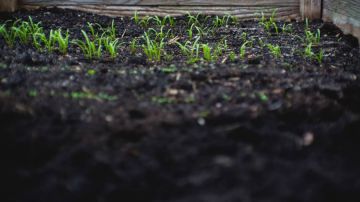5 Steps to Follow to Prepare Your Soil Before Gardening
You may be ready to plant your garden, but before you jump right in, you should consider the soil’s conditions

Photo: Unsplash/@markusspiske
You may be ready to plant your garden, but before you jump right in, you should consider the soil’s conditions. This way you will increase the potential for success in exchange for your time and financial investment.
According to the landscaper Samuel Malavé, “the soil provides firm support to the plants, solidifies the roots, provides excellent nutrition, solidifies the stem and helps us obtain healthy plants beginning with its germination until its harvest.”
The soil is an important factor for the creation of an adequate environment for the development of the plants (unless you are using a hydronic system). In general terms, the soil is composed of sand, clay and mud.
According to soil specialist, Oscar Muñiz Torres, clay and mud “are the most important reserves of nutrients for the plants”. While the sand “helps maintain larger pores for its airing and the movement of the water,” as written in the publication The Tree in The Garden, of the Extended Agricultural Service of Puerto Rico. Therefore, knowing the type of soil that you have and its composition will allow you to know what improvements should be made and what plants are good for it.
To prepare the space where you will plant your tree, orchard or garden, Muñiz torres recommends the following steps:
- Remove any wooden residue that the soil might contain. These can challenge your planting plans, give it a not so pleasant look and even damage the plants.
- Ring out the soil and level it.
- Be sure to fill in holes to avoid water ponds.
- Test the soil to determine its texture. You can obtain a sample of ½ cup of soil where you wish to plant and put it in ahalf gallon crystal vase. Then you fill it half way with water. Shake it and let it rest for a few days. The sand sets first, and then clay can last several days. When the water becomes completely clear, you will observe three layers; the middle one is the mud one. The ideal soil should contain an almost equal proportion of the three components.
- Add about six inches of muddy soil or sandy soil. Also, and if necessary, add lime to correct its acidity; and organic material to condition the soil with nutrients.
Once you have addressed these steps, plant away!

















